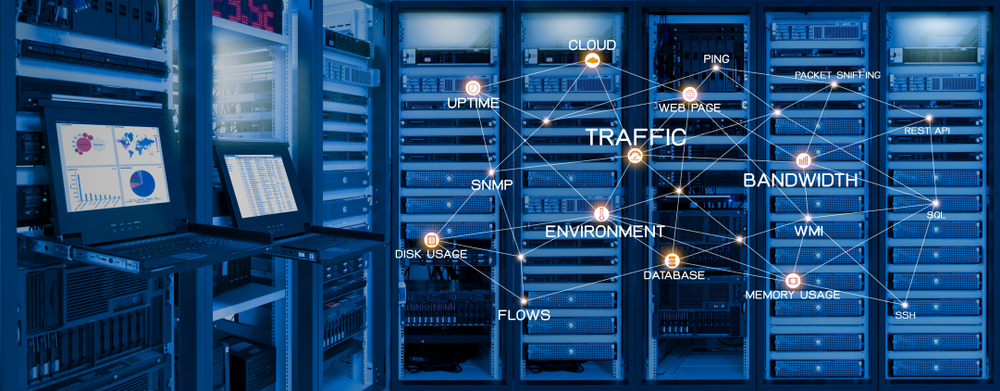
DCIM Software Implementation Best Practices
DCIM Software Implementation Best Practices
Building a data center is a very involved process. From building materials to air management, there are a lot of physical comments that need to be managed. Beyond that, all of those pieces of technology — servers, firewalls, networking cables, and other supporting infrastructure — all have to be managed.
But manually managing these assets, especially individually, is a near-impossible task. And doing so without the assistance of some sort of software to help could severely limit a data center’s potential to grow. There is an answer, though, and it’s called data center infrastructure management.
What Is Data Center Infrastructure Management (DCIM) Software?
DCIM software is used to handle the status of IT equipment and infrastructure within a data center. It allows IT teams to manage the interactions and functions of the various pieces that make up a data center in the cloud or on-premises. Additionally, DCIM software provides an easy way to measure and calibrate data center performance while monitoring data center health.
Benefits of DCIM Software
DCIM software is so beneficial to data center operators because it allows a holistic look at the health of a data center. When planning for data center upgrades, knowing exactly where specific bottlenecks are will allow for more efficient equipment and system upgrades.
IT teams will also gain many remote monitoring tools, allowing for single teams to monitor multiple data centers no matter how far they’re distributed. Imagine an overall increase in IT productivity with the ability to proactively manage and mitigate incidents in real time.
In addition to the visibility benefits, DCIM software can help increase overall uptime thanks to the enormous amount of information it can provide. For example, the most important thing for a rapidly growing data center is capacity. As more users are added to the mix, IT teams are able to monitor the data center’s overall performance or the performance of specific parts and systems.
Improving DCIM Software
While DCIM software has much potential, there are areas where additional improvements could be had.
To start, let’s look at what is arguably the most important thing in maintaining anything that’s connected to the internet — security. Because DCIM software ties multiple systems together, this also increases the number of vulnerabilities IT teams face within the data center.
Data centers also need to consider external monitoring tools that cover environmental factors like heat, energy use, and power consumption. To rectify this, data centers may need to invest in the necessary monitoring tools or replace outdated, non-compatible hardware.
The Structure of DCIM
DCIM intuitively brings many different data center systems and components together under one monitoring ‘umbrella’. While DCIM software can certainly monitor for abnormalities, it’s also incredibly proficient in mapping out critical upgrade paths or providing critical data center-wide reporting. A few of these benefits include:
The Ability to Plan Capacity
Easily construct data-backed models of future data center expansion based on adjustable parameter limitations.
Better Analysis
Because data is collected for each individual data center system, IT teams can deeply analyze specific systems for performance metrics, potential hazards, and more.
Planning for Hardware Changes
When calculating downtime risks due, DCIM software can create a documented journey for necessary hardware changes. If a newly added piece of equipment begins to affect the performance of the data center, IT teams can easily check the center’s logs to see when and where that performance change happened.
In the Cloud or On the Ground
Data centers require constant monitoring and support. Handling these functions without DCIM software can severely hinder an IT team’s productivity. If you’re ready to take full control of your data center and free up skilled labor with a better way to manage critical data center systems, reach out to our data center experts for a consultation.

